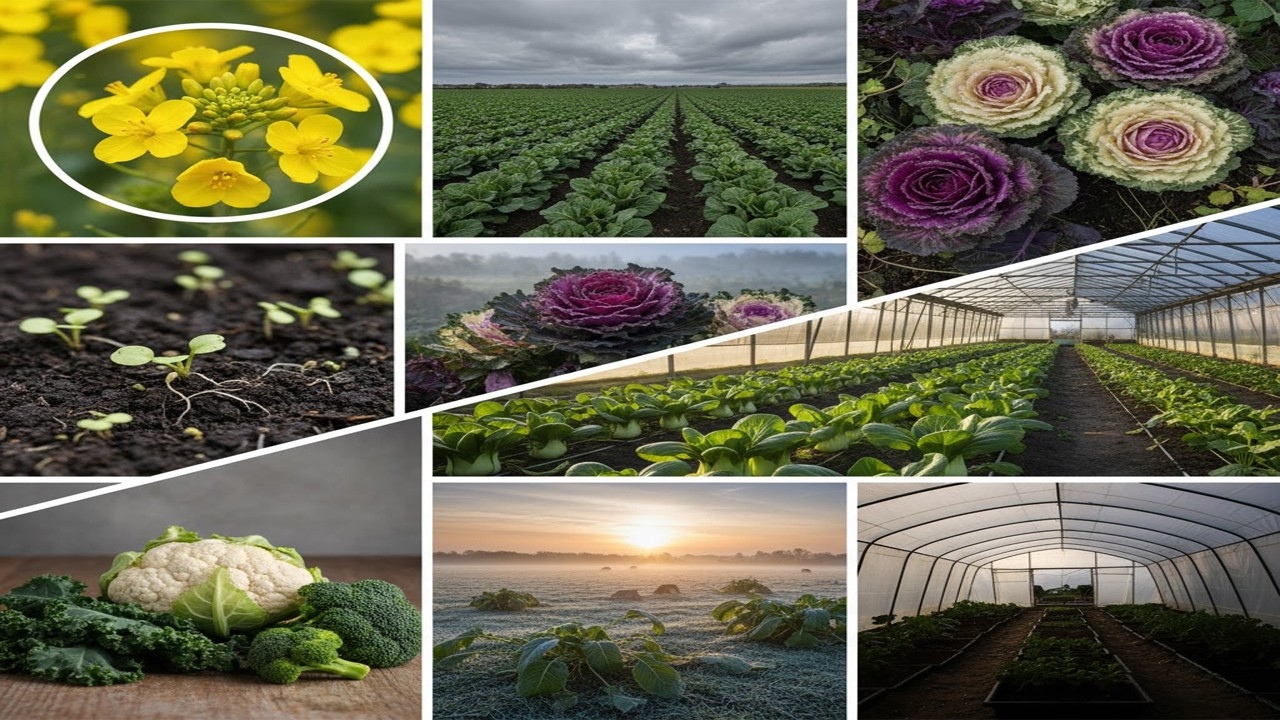Join on WhatsApp
Get the latest updates directly on WhatsApp – motivation, news & more!
Brassicas, also known as cruciferous vegetables, belong to the Brassicaceae family and include a wide range of edible and ornamental plants. From brassica cabbage and brassica broccoli to brassica cauliflower and brassica kale, these cool-season crops are staples in gardens worldwide. The term brassica sp refers to the species within this family, which includes wild brassica, brassica sativa, and perennial brassica types. Whether you’re growing brassica for food, forage, or decoration, understanding the different types of brassica is key to successful cultivation.
Popular Brassica Varieties for Home and Farm
There are many brassica varieties suited for different climates and purposes. Brassica turnip, radish brassica, and forage turnips are commonly used in forage systems, especially forage turnips for deer and forage radish for deer. Forage brassicas and forage brassica varieties like groundhog forage radish and stubble turnip varieties are ideal for grazing livestock. On the culinary side, bok choy brassica, pak choi brassica, and asian brassicas offer fast-growing options for stir-fries and soups. Brassica brussel sprout and brussel sprouts brassica are slow growers but worth the wait for their nutty flavor.
Ornamental and Decorative Brassicas
Brassica ornamental plants add visual interest to gardens with their vibrant foliage and unique textures. Flowering brassica and brassica ornamental cabbage are popular in fall displays, while ornamental brassica cabbage and decorative brassica varieties thrive in cooler months. These plants are not only beautiful but also edible, making them a dual-purpose addition to your landscape.
Starting Brassicas from Seed
Growing brassicas from seed is a rewarding process. Begin with high-quality brassica seed or bulk brassica seed from reputable sources. Brassica seed for sale and brassica seed for sale near me are common searches for gardeners sourcing local suppliers. Forage turnip seed and forage turnip seed for sale are ideal for large-scale planting. Starting early brassicas indoors or directly sowing spring brassicas and autumn planting brassicas ensures a steady harvest throughout the year.
Planting Brassicas in Spring and Fall
Brassica planting should align with seasonal conditions. Planting brassicas in spring allows crops like cauliflower brassica and kohlrabi brassica to mature before summer heat. Fall brassicas and winter brassicas, including brassica cavolo and swiss chard brassica, thrive in cooler temperatures. Summer brassicas like rocket brassica and chard brassica require shade tolerant brassicas to avoid bolting. Flores brassicas, or flowering types, often bloom in late summer, adding color and attracting pollinators.
Soil Preparation and Brassica Care
Brassicas prefer fertile, well-drained soil with a neutral pH. Incorporate compost and brassica plus fertilizers to boost growth. Brassica oilseeds enrich the soil and support healthy root development. Gomenzer, a lesser-known brassica, benefits from similar care. Regular watering and mulching help maintain moisture and suppress weeds. Growing brassicas in a polytunnel can extend the season and protect crops from harsh weather.
Pest Management and Brassica Protection
Brassica caterpillars, aphids, and flea beetles are common pests. Controlling caterpillars on brassicas involves handpicking, using row covers, and applying organic sprays. Brassica protection products llc offers solutions tailored to home and commercial growers. Best protection for brassicas includes crop rotation, companion planting, and maintaining garden hygiene. Shade tolerant brassicas and hot new brassica varieties often show improved resistance to pests and diseases.
Harvesting and Using Brassicas
Harvest brassica sprout, brassica radish, and brassica turnip when roots are firm and leaves are vibrant. Brassica kale and brassica cabbage can be picked continuously, while brassica cauliflower and brassica broccoli should be harvested before heads loosen. Kohl brassica and kohlrabi brassica are best when bulbs are tender. Use brassicas fresh, steamed, roasted, or fermented. Brassica tea made from leaves is gaining popularity for its health benefits, including antioxidant properties found in truebroc tea.
Specialty Brassicas and Niche Uses
Some brassicas serve unique roles in agriculture and cuisine. Brassica cookbook recipes highlight the versatility of these vegetables. Brassica 4 and ad1y2n are experimental cultivars with enhanced traits. Charles Dowding brassicas emphasize no-dig gardening techniques for improved soil health. A brassica like brassica sativa may be used in oil production, while new brassica hybrids offer improved yield and flavor. Grazing turnips and radishes support regenerative farming practices.
Seasonal Planning and Crop Rotation
Plan your brassica planting based on seasonal needs. Spring brassicas include fast-growing types like pak choi brassica and radish brassica. Autumn planting brassicas such as brassica cavolo and brassica brussel sprout benefit from cooler weather. Fall brassicas and winter brassicas require frost-tolerant varieties. Rotate crops annually to prevent soil depletion and reduce pest buildup. Different types of brassicas should be spaced appropriately to avoid competition and ensure healthy growth.
Final Thoughts on Growing Brassicas
Growing brassica is both an art and a science. From wild brassica to decorative brassica, the diversity within this plant family offers endless possibilities. Whether you’re cultivating forage brassicas for livestock, brassica ornamental cabbage for aesthetics, or brassica kale for nutrition, the key lies in understanding the needs of each variety. With proper brassica protection, soil care, and seasonal planning, your garden can flourish with vibrant, healthy brassicas year-round.
